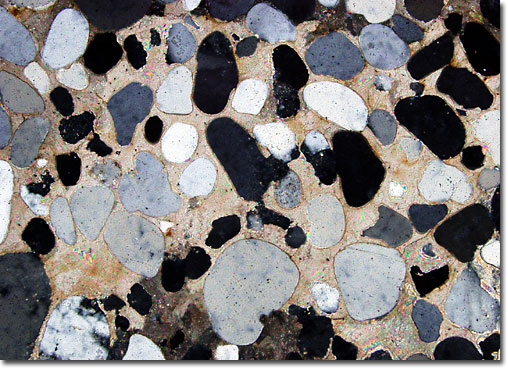|
The mineral glauconite, which characteristically appears some shade of green, derives its name from the Greek word glaukos, meaning “bluish-green.” Typically found in small grains referred to as pellets, the color of the substance is a consequence of its iron content and its other constituent elements. Glauconite can be precipitated directly from marine waters or may alternatively occur via a transformation of the organic wastes of bottom-dwellers or through the underwater modification of certain clays. Presence of the mineral is responsible for the widespread greensands that occur along the bottom of the oceans, as well as many of the rocks commonly known as greenstones.
|
